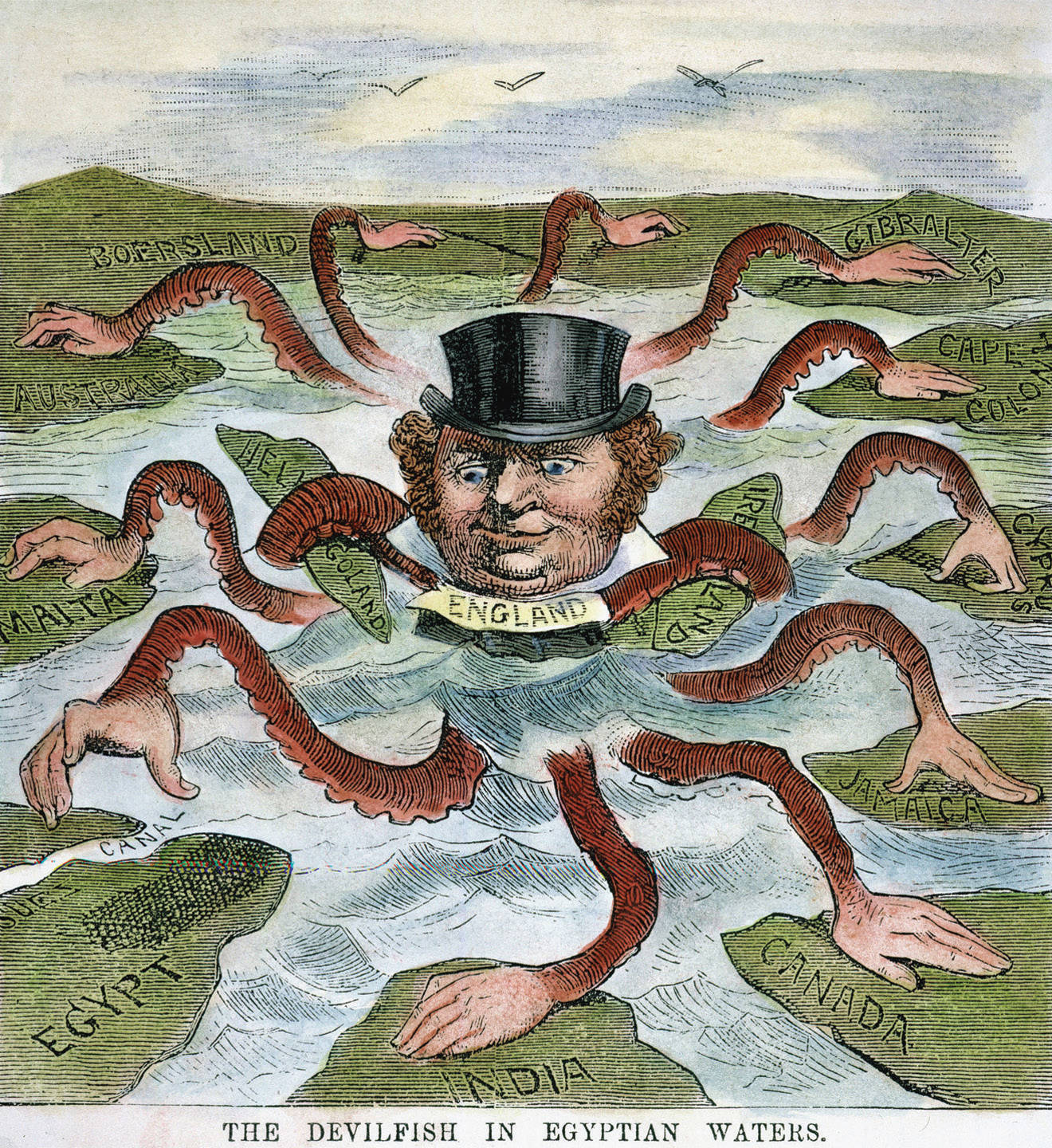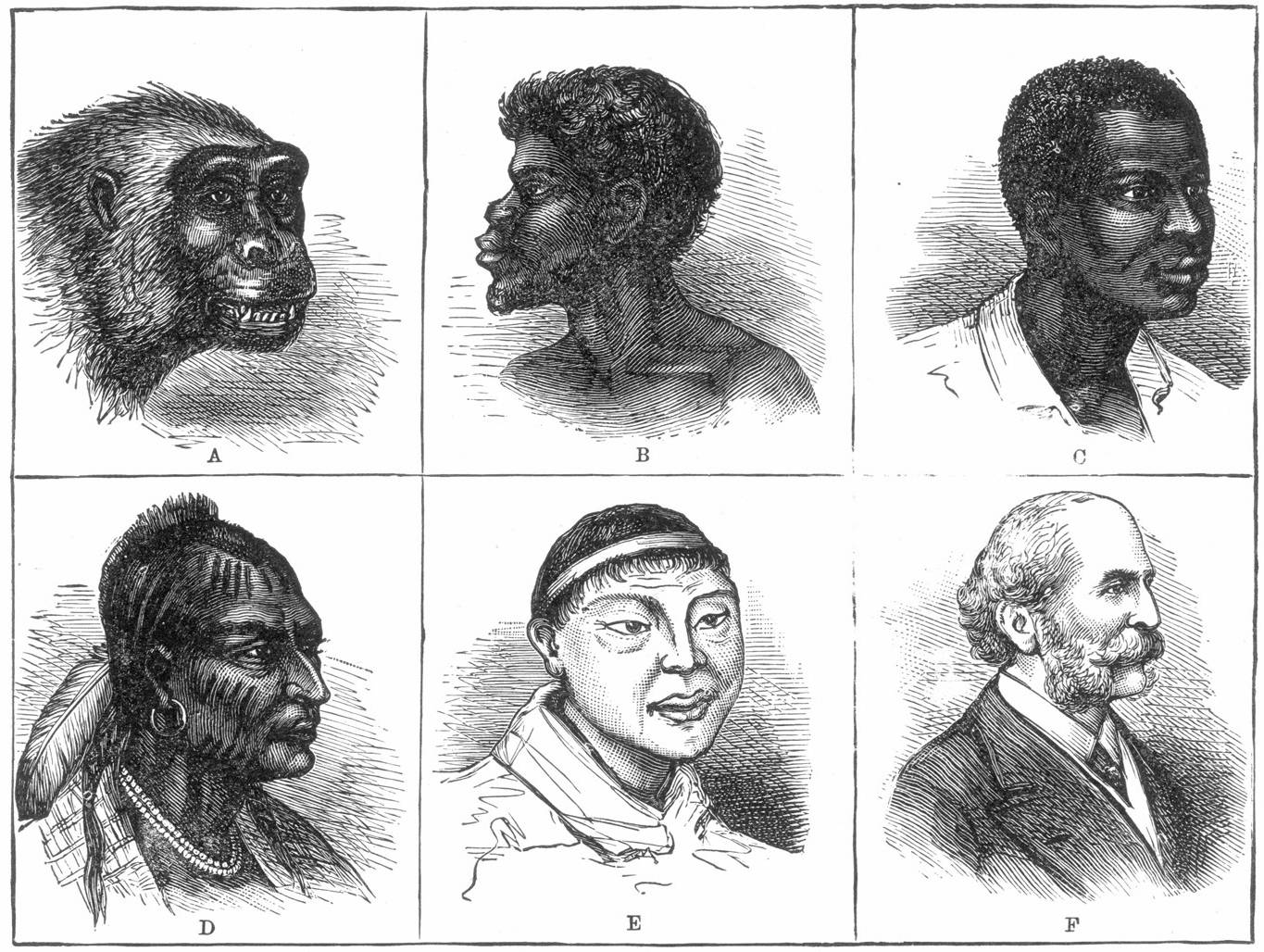Industry and Empire
Change
Question
In what ways did the Industrial Revolution shape the character of nineteenth-century European imperialism?
[Answer Question]
Behind much of Europe’s nineteenth-century expansion lay the massive fact of its Industrial Revolution, a process that gave rise to new economic needs, many of which found solutions abroad. The enormous productivity of industrial technology and Europe’s growing affluence now created the need for extensive raw materials and agricultural products: wheat from the American Midwest and southern Russia, meat from Argentina, bananas from Central America, rubber from Brazil, cocoa and palm oil from West Africa, tea from Ceylon, gold and diamonds from South Africa. This demand radically changed patterns of economic and social life in the countries of their origin.
Furthermore, Europe needed to sell its own products. One of the peculiarities of industrial capitalism was that it periodically produced more manufactured goods than its own people could afford to buy. By 1840, for example, Britain was exporting 60 percent of its cotton-cloth production, annually sending 200 million yards to Europe, 300 million yards to Latin America, and 145 million yards to India. This last figure is particularly significant because for centuries Europe had offered little that Asian societies were willing to buy. Part of European and American fascination with China during the nineteenth and twentieth centuries lay in the enormous market potential represented by its huge population.
Much the same could be said for capital, for European investors often found it more profitable to invest their money abroad than at home. Between 1910 and 1913, Britain was sending about half of its savings overseas as foreign investment. In 1914, it had some 3.7 billion pounds sterling invested abroad, about equally divided between Europe, North America, and Australia on the one hand and Asia, Africa, and Latin America on the other.

Wealthy Europeans also saw social benefits to foreign markets, which served to keep Europe’s factories humming and its workers employed. The English imperialist Cecil Rhodes confided his fears to a friend:
Yesterday I attended a meeting of the unemployed in London and having listened to the wild speeches which were nothing more than a scream for bread, I returned home convinced more than ever of the importance of imperialism. . . . In order to save the 40 million inhabitants of the United Kingdom from a murderous civil war, the colonial politicians must open up new areas to absorb the excess population and create new markets for the products of the mines and factories. . . . The British Empire is a matter of bread and butter. If you wish to avoid civil war, then you must become an imperialist.2
Thus imperialism promised to solve the class conflicts of an industrializing society while avoiding revolution or the serious redistribution of wealth.
But what made imperialism so broadly popular in Europe, especially in the last quarter of the nineteenth century, was the growth of mass nationalism. By 1871, the unification of Italy and Germany made Europe’s already competitive international relations even more so, and much of this rivalry spilled over into the struggle for colonies or economic concessions in Asia and Africa. Colonies and spheres of influence abroad became symbols of “Great Power” status for a nation, and their acquisition was a matter of urgency, even if they possessed little immediate economic value. After 1875, it seemed to matter, even to ordinary people, whether some remote corner of Africa or some obscure Pacific island was in British, French, or German hands. Imperialism, in short, appealed on economic and social grounds to the wealthy or ambitious, seemed politically and strategically necessary in the game of international power politics, and was emotionally satisfying to almost everyone. This was a potent mix indeed.
If the industrial era made overseas expansion more desirable or even urgent, it also provided new means for achieving those goals. Steam-driven ships, moving through the new Suez Canal, completed in 1869, allowed Europeans to reach distant Asian and African ports more quickly and predictably and to penetrate interior rivers as well. The underwater telegraph made possible almost instant communication with far-flung outposts of empire. The discovery of quinine to prevent malaria greatly reduced European death rates in the tropics. Breech-loading rifles and machine guns vastly widened the military gap between Europeans and everyone else.
Change
Question
What contributed to changing European views of Asians and Africans in the nineteenth century?
[Answer Question]
Industrialization also occasioned a marked change in the way Europeans perceived themselves and others. In earlier centuries, Europeans had defined others largely in religious terms. “They” were heathen; “we” were Christian. Even as they held onto this sense of religious superiority, Europeans nonetheless adopted many of the ideas and techniques of more advanced societies. They held many aspects of Chinese and Indian civilization in high regard; they freely mixed and mingled with Asian and African elites and often married their women; some even saw more technologically simple peoples as “noble savages.”
With the advent of the industrial age, however, Europeans developed a secular arrogance that fused with or in some cases replaced their notions of religious superiority. They had, after all, unlocked the secrets of nature, created a society of unprecedented wealth, and used both to produce unsurpassed military power. These became the criteria by which Europeans judged both themselves and the rest of the world.
By such standards, it is not surprising that their opinions of other cultures dropped sharply. The Chinese, who had been highly praised in the eighteenth century, were reduced in the nineteenth century to the image of “John Chinaman”—weak, cunning, obstinately conservative, and, in large numbers, a distinct threat, represented by the “yellow peril” in late-nineteenth-century European thinking. African societies, which had been regarded even in the slave-trade era as nations and their leaders as kings, were demoted in nineteenth-century European eyes to the status of tribes led by chiefs as a means of emphasizing their “primitive” qualities.
Increasingly, Europeans viewed the culture and achievements of Asian and African peoples through the prism of a new kind of racism, expressed now in terms of modern science. Although physical differences had often been a basis of fear or dislike, in the nineteenth century, Europeans increasingly used the prestige and apparatus of science to support their racial preferences and prejudices. Phrenologists, craniologists, and sometimes physicians used allegedly scientific methods and numerous instruments to classify the size and shape of human skulls and concluded, not surprisingly, that those of whites were larger and therefore more advanced. Nineteenth-century biologists, who classified the varieties of plants and animals, applied these notions of rank to varieties of human beings as well. The result was a hierarchy of races, with the whites on top and the less developed “child races” beneath them. Race, in this view, determined human intelligence, moral development, and destiny. “Race is everything,” declared the British anatomist Robert Knox in 1850. “Civilization depends on it.”3 Furthermore, as the germ theory of disease took hold in nineteenth-century Europe, it was accompanied by fears that contact with “inferiors” threatened the health and even the biological future of more advanced or “superior” peoples.

These ideas influenced how Europeans viewed their own global expansion. Almost everyone saw it as inevitable, a natural outgrowth of a superior civilization. For many, though, this viewpoint was tempered with a genuine, if condescending, sense of responsibility to the “weaker races” that Europe was fated to dominate. “Superior races have a right, because they have a duty,” declared the French politician Jules Ferry in 1883. “They have the duty to civilize the inferior races.”4 That “civilizing mission” included bringing Christianity to the heathen, good government to disordered lands, work discipline and production for the market to “lazy natives,” a measure of education to the ignorant and illiterate, clothing to the naked, and health care to the sick, all while suppressing “native customs” that ran counter to Western ways of living. In European thinking, this was “progress” and “civilization.”
A harsher side to the ideology of imperialism derived from an effort to apply, or perhaps misapply, the evolutionary thinking of Charles Darwin to an understanding of human societies. The key concept of this “social Darwinism,” though not necessarily shared by Darwin himself, was “the survival of the fittest,” suggesting that European dominance inevitably involved the displacement or destruction of backward peoples or “unfit” races. Referring to native peoples of Australia, a European bishop declared:
Everyone who knows a little about aboriginal races is aware that those races which are of a low type mentally and who are at the same time weak in constitution rapidly die out when their country comes to be occupied by a different race much more rigorous, robust, and pushing than themselves.5
Such views made imperialism, war, and aggression seem both natural and progressive, for they were predicated on the notion that weeding out “weaker” peoples of the world would allow the “stronger” to flourish. These were some of the ideas with which industrializing and increasingly powerful Europeans confronted the peoples of Asia and Africa in the nineteenth century.